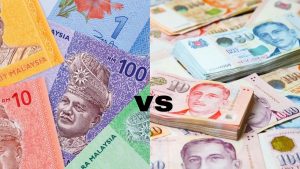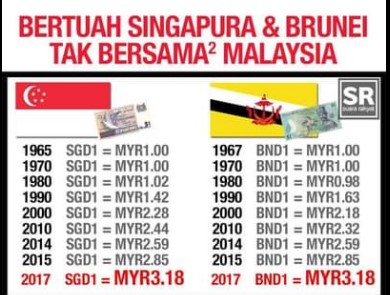“Water face drop” as ringgit depreciates to record low against Sing dollar

“Currency weakness is a symptom of a larger illness. If the disease is not treated and the rot is not stopped, the ringgit will keep on sliding lower and will impoverish Malaysia on a relative basis for many years to come.
(Focus Malaysia) – ECONOMIC fundamentals aside, news that the Singapore dollar (SGD) has hit an all-time high against the ringgit is a bitter pill to swallow especially among baby boomer and Generation X Malaysians.
Yesterday (April 25), Bloomberg reported that after hitting a five-year high last week, the SGD continued its upward trend against the ringgit by posting an all-time high of 3.1688.
While older generation Malaysians can typically accept the fact that the ringgit, too, has slide to an alarming low of RM4.3568 against the greenback yesterday, the slump against SGD evokes deeply rooted emotional sentiment which can be traced back to Aug 9, 1965 when Singapore separated from Malaysia to become an independent and sovereign state.

The separation was the result of deep political and economic differences between the ruling political parties back then which created communal tensions that resulted in racial riots in July and September 1964.
Nobody expects Singapore which is unblessed with natural resources to say the least, to emulate Japan to rise from the ashes of the atomic bombings of Hiroshima and Nagasaki during World War II, to become developed economies at par with their US and European counterparts.
While the Singaporean and Malaysian currencies were on par right up to around 1980, that changed over the next 40 years with both the ringgit and SGD moving terribly out of line with the SGD triumphing over three times in value.
This has broadly reflected the widening gap in economic development between Malaysia and Singapore, with the latter far outpacing its northern neighbour Malaysia in all areas including educational levels, infrastructure, GDP (gross domestic product) per capita and quality of life, among others.

